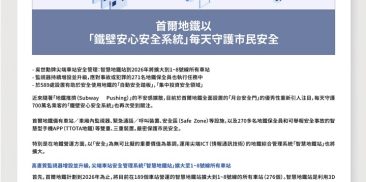特刊
-
2023 December (Vol.93)
-
特刊 報名日期作者SMG 观看次数665

World’s first late-night autonomous bus service
The Seoul Metropolitan Government (SMG) announced to begin operating the world’s first late-night autonomous driving bus service (Seoul Autonomous Night Bus A21) starting on Mon, Dec. 4, connecting the suburban and urban areas. It is expected to make late-night travel much easier for citizens by using autonomous driving technology and vehicles, bringing further convenience to citizens’ late-night travel from returning home to even early commute to work. The city explained that while the United States had previously operated late-night autonomous taxi service (robotaxis), Seoul is the world’s first roll out regular operation of late-night autonomous bus service for public transportation. The late-night autonomous bus service circulates the 9.8-km-long center-lane bus route from Hapjeong Station to Dongdaemun Station, catering to the needs of the bustling nighttime transportation of university campuses and shopping malls densely concentrated along the route. The autonomous bus fleet comprises two Hyundai Elec City vehicles, which are large electric autonomous buses with identical specifications to the standard intra-city models. The autonomous bus service is available on weekdays from Monday to Friday and only at night from 11:30 PM to 5:10 AM. Passengers may freely board like any regular bus on 40 center-lane bus stops (20 one-way): Hapjeong Station – Hongik Univ. Station – Sinchon Station – Ahyeon Station – Seodaemun Sation – Sejong-ro (Bridge) – Jongno 1-ga – Jongno 5-ga – Dongdaemun Station (Heunginjimun). * Details: english.seoul.go.kr/worlds-first-late-night-autonomous-bus-service The late-night autonomous bus service will be synced to the city’s bus information terminal (BIT), providing arrival data in real-time. Portal sites, such as Naver and Daum, also plan to provide real-time locations and arrival times of bus units when users search “심야 A21” (Seoul Autonomous Night Bus A21). However, the city urged citizens to check the operation status of the bus beforehand as it may be suspended due to safety reasons, such as in the case of sudden snowstorms. For both passenger and traffic safety, the city has installed 59 traffic infrastructure units in bus-only lanes to provide real-time information, such as traffic lights and time until the next signal, through 5G telecommunication and repeatedly tested trials to examine the safety of the bus operation with external experts. As a public mode of transportation, the autonomous night bus will accept passengers’ transportation card, just like regular buses. While it will be free during the pilot service period, riders must tag their transportation card, which will charge ₩0, and the transfer discount benefit will also be processed for transfers. The city plans to switch it to a paid service in the first half of next year after a stabilization process, while extending the route to Cheongnyangni Station (making a total of 13.2 km). With the results of the operation, the city will establish regular long-distance autonomous bus routes connecting the outskirts of the city with downtown, transporting people 24/7.
Like It
55 人喜歡此頁







